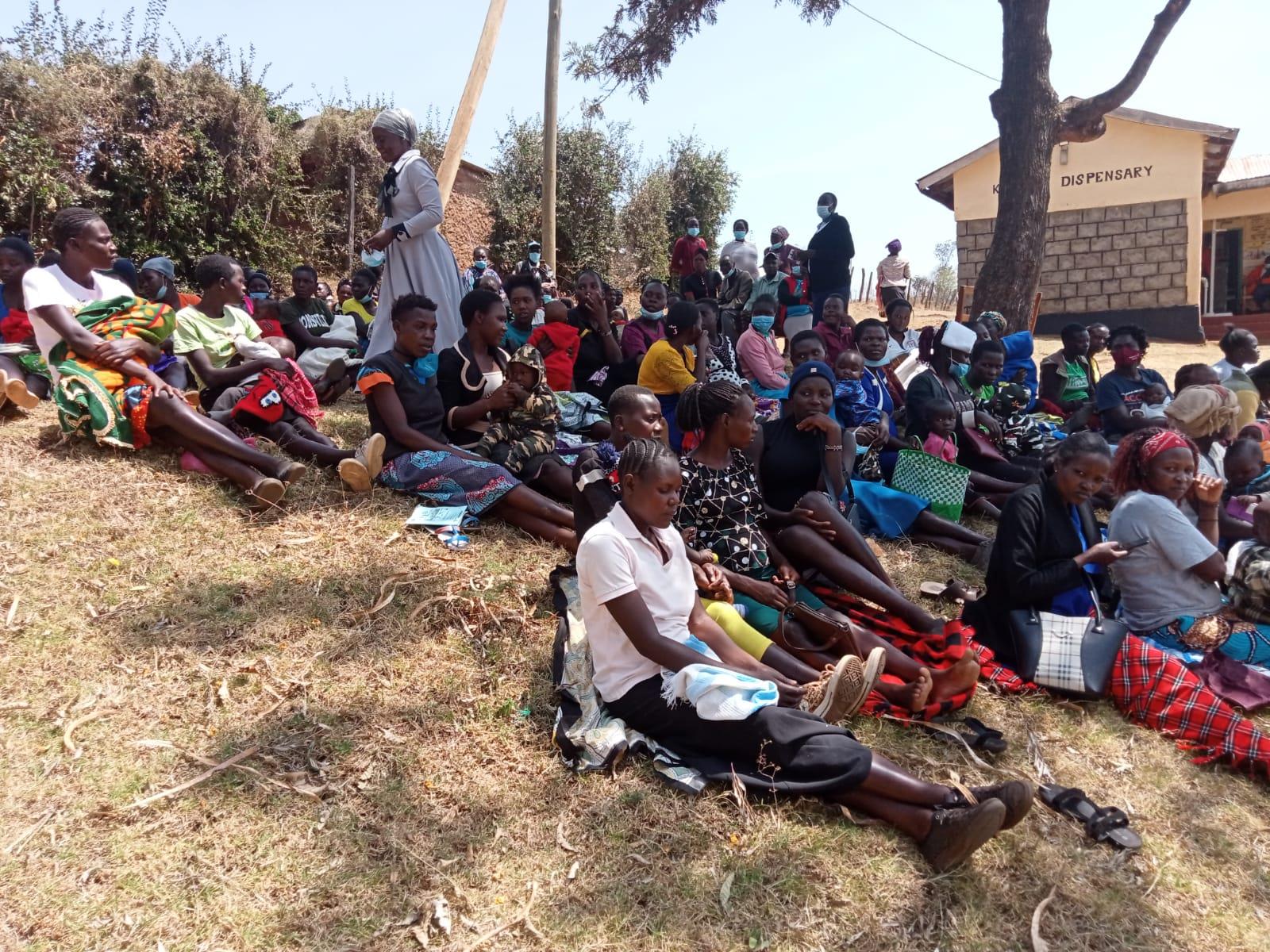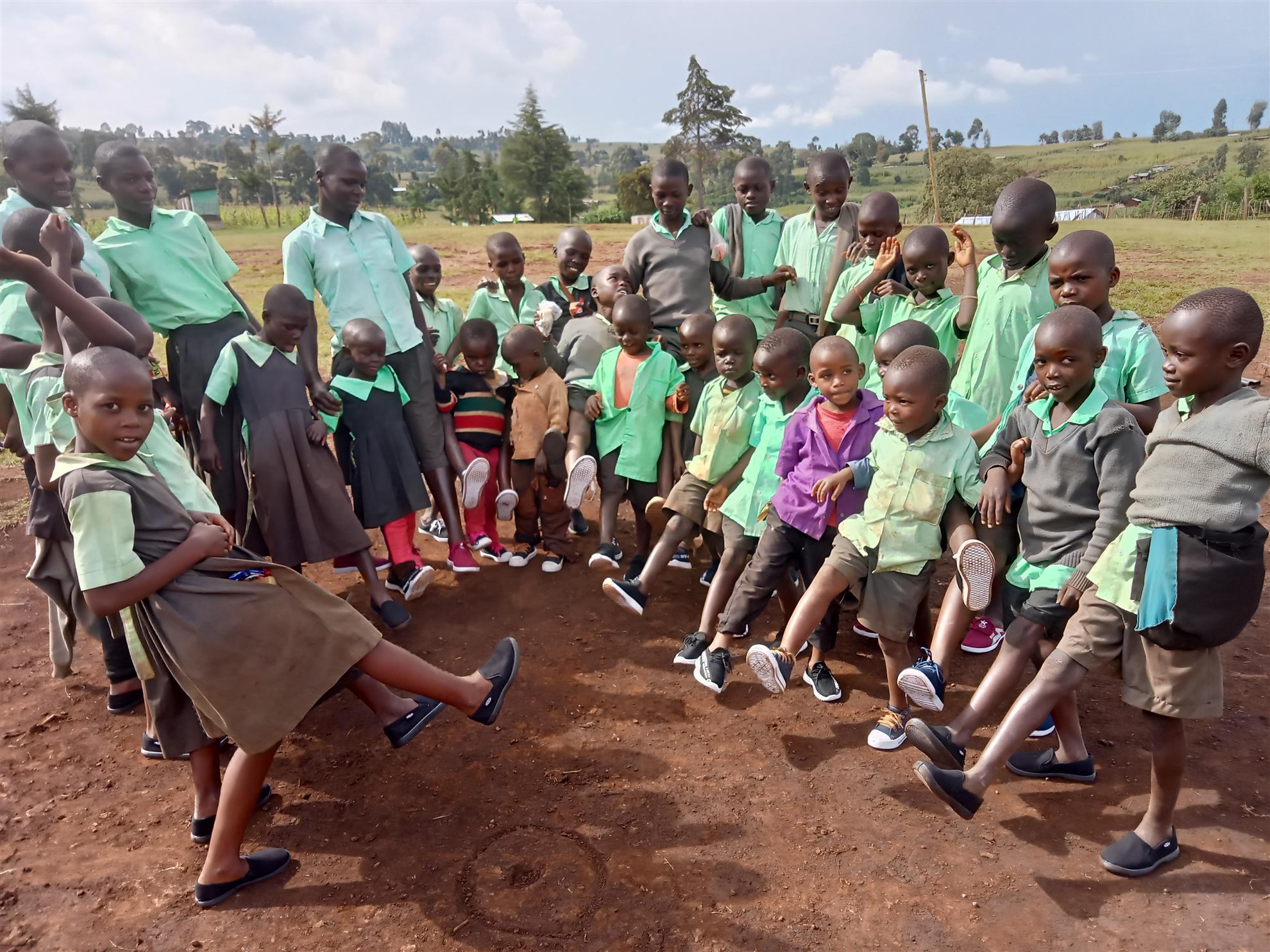KIMONDO JIGGERS FINAL REPORT - OCT 26-27 2021
Kimondo is one of the community units within Endebess Sub County where there are some outreach sites for preventive services. These are regularly visited by Rotary Doctors Sweden. During household visits during the covid programme, it was realized that there was an increase in the number of jigger cases among members of this community. A jigger is a small parasitic flea that burrows into the skin of a warm-blooded host before laying eggs. They generally attack feet or hands. At first, the jigger appears as a small black dot on the skin. As the female's abdomen fills with blood and eggs, a bump forms underneath the skin, which is often painful and itchy and makes walking incredibly difficult.


One... Many!
During a visit in February this year, it could be confirmed that the area is now free from jiggers!
Our helpers on site, Selina and Jacintha will appear at the Club Meeting on 31st of May, don't miss it!
By that time LIRC will have decided how to proceed feeding the activity, making it truly sustainable.

Field officers and Community Health Extension Workers were able to gather and verify data on the number of jiggers’ cases in the affected villages. Based on these findings, the Rotary Club Lund International undertook to finance an action in cooperation with Rotary Doctors Sweden. The approach was to focus on practical measures which would have a sustained effect, in particular through training activities on regular house disinfection, sanitation and general hygiene, disarm the myths and misconceptions surrounding jiggers infestations.

During the pre-campaign activities, more than 295 beneficiaries were empowered with knowledge and skills on causes of jiggers’ prevention, management and house disinfection.
The treatment exercise then comprised treatment of 1565 cases at three different sites within the community. After treatment, follow ups were conducted.The first 3 weeks after treatment; the second follow up at 6 weeks after treatment and then the third follow up happened at 4 months after treatment. We also had a beef-up activity in September aimed at filling in the gaps identified during follow ups in order to achieve a jigger free community.
The follow ups were meant to help monitor and assess the rate of success of the campaign and during the fourth follow-up:
- The progress was assessed of behavior change as a result of the beneficiary training
- The level of hygiene of the houses was examined to see the uptake and effectiveness of house disinfection.
- In case of treatment failure, further guidance on re-treatment was offered for cases that were still having jiggers.
- The number of jigger cases within the whole community was assessed by getting information from nearby government dispensary and schools on number of jigger cases being reported after the campaign.
- The sustainability of the project was assessed.

- From the feedback received from community members we can note a behavior change directed towards eradication of jiggers as most of them now have a better understanding of what jigger infestation is, causes and ways of eradication unlike before when they had a lot of mis-conceptions and myths about jiggers.
- All community members we interacted with felt they had a direct responsibility in eradicating jiggers by changing their behavior especially on regular house disinfection, sanitation and general hygiene.
- Those who had missed shoes during the treatment exercise received them during the beef-up exercise in September and are effectively using them; this has helped in quicker healing of the feet and protection from re-infection.
- We also visited the government dispensary to assess the rate of jigger cases reported and since the jigger campaign treatment exercise the number of jigger cases reported is minimal with no case reported since June 2021.
- We had two cases of podoconiosis one lady and one gentleman, during this follow up exercise, we followed both of them up, and they are doing very well with no jigger infestation except for the podoconiosis condition.
CHALLENGES
- Very old people living alone have a challenge to routinely disinfect their houses and clean their beddings and feet well unless community members come in to assist them.
- 8 months after treatment we could not find a couple of the follow up cases/persons due to relocation of residence area and one passed on due to a chronic illness he/she had been suffering off.
THE WAY FORWARD
- There is still need to continue emphasizing on the importance of keeping good sanitation standards, effective use of shoes as one of the ways of eliminating jigger re-infestation: this will be achieved through continuous health education to these households by volunteers.
- There is need for continuous follow up with the help of Community health volunteers to monitor behavior change and to ensure sustainability of prevention measures in this community.
- With the additional exercise of health education to households and schools, house and classroom disinfection, distribution of shoes and detergents we look forward to a jigger free community.
